The Golden-winged Warbler has suffered one of the steepest population declines of any songbird species in the past 45 years and is currently being considered for listing as an endangered species. Audubon North Carolina staff are working directly with private landowners in western NC where the Golden-winged Warbler returns each spring to breed in young (early successional) forests to help bring back this gem of the forest.
Through our Putting Working Lands to Work for Birds and People program, Audubon North Carolina is engaging private landowners in focal areas in the western region to manage their land for the Golden-winged Warbler and other forest bird species while maintaining the long-term future uses.
By converting even a small portion of land into early successional forest habitat, you can help protect birds like the Golden-winged Warbler, which rely on Western NC’s shrubland habitats to breed each summer. Landowners who qualify receive special signs that signify their efforts to manage their land for forest birds including the Golden-winged Warbler.
SAHC & AMERICORP VOLUNTEERS
One of the hotspots for golden-winged warblers is in Avery County on property owned by the Southern Appalachian Highlands Conservancy (SAHC). Audubon NC and SAHC have formed a valuable partnership working together to be good stewards of the land in the Roan Highlands and beyond. Seeking technical guidance on early succcesional habitat management, SAHC was able to qualify for cost-share assistance through Natural Resources Conservation Service’s Working Lands for Wildlife program.
With the help of four new Americorp members (from as far away as Missouri), several SAHC staff had a workday to continue to restore the habitat for Golden-winged Warblers. We are pleased to present them with a Shrubland recognition sign for their hard work!
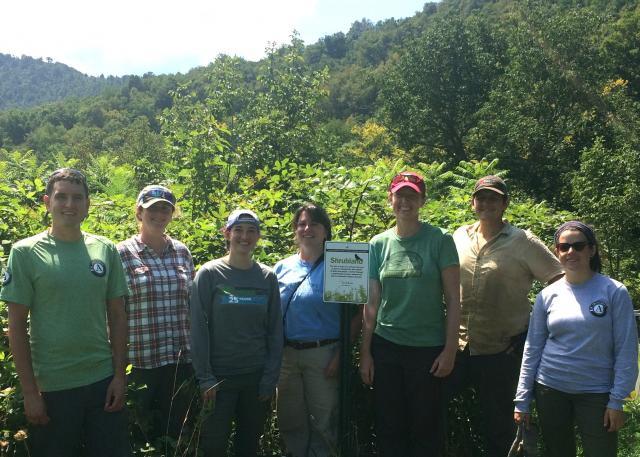
MARK AND MARGARET HARTMAN
“We love to be out in nature, it is very energizing. Aimee and the Audubon Society have added elements that make our experience even more exciting and informative. It has been a real pleasure following the Golden-winged Warbler habitat with Aimee!” – Margaret Hartman
“After visiting Mark and Margaret, I felt sure their land would be perfect to host at least one pair if not many more breeding pairs. We were ecstatic when we heard TWO males singing, both new records for the area. Both birds buzzed over our heads – the Hartmans’ first GWWA sightings (a “lifer” as we say)! Margaret had already studied their song and could easily identify it before I left. They are both very dedicated to preserving the biodiversity on their land and I look forward to sharing a small part of this journey with them.” – Aimee Tomcho, Conservation Biologist
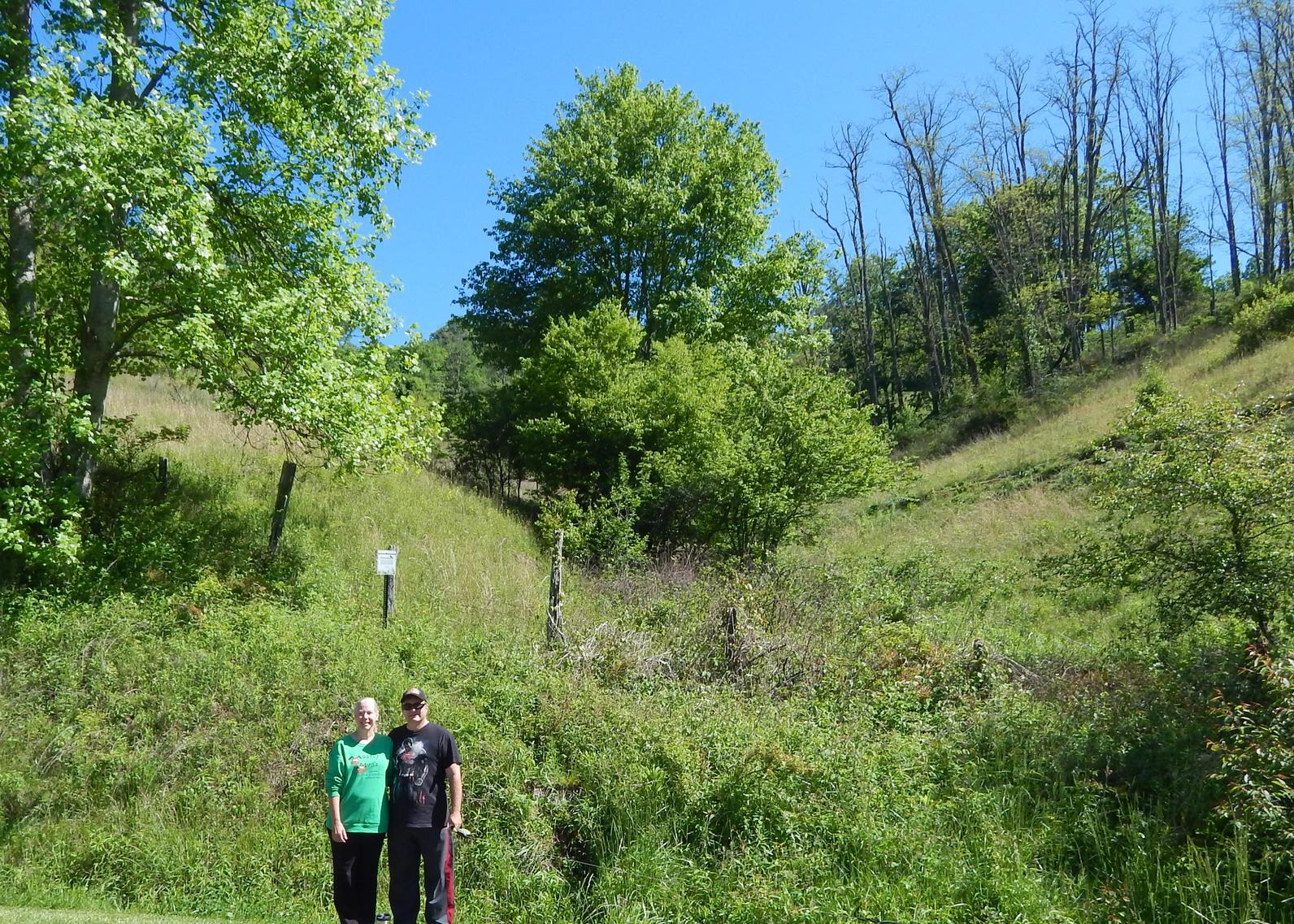
DON AND HOLLY ADDIS
In Watauga County, NC, the Addis family anxiously awaits the arrival of the first Golden-winged Warbler to their hilltop property. This year they are paying special attention to the Southern Appalachian Golden-winged Warbler Best Management Practices information that Audubon NC provided them.
Realizing there were simple steps they could take to maximize their habitat potential for GWWA, they discussed the rotation of the cattle grazing lease as well as discontinued mowing a large part of the hillside below their home. We hope that by next year the pair historically nesting just down the road will successfully expand their bird family.
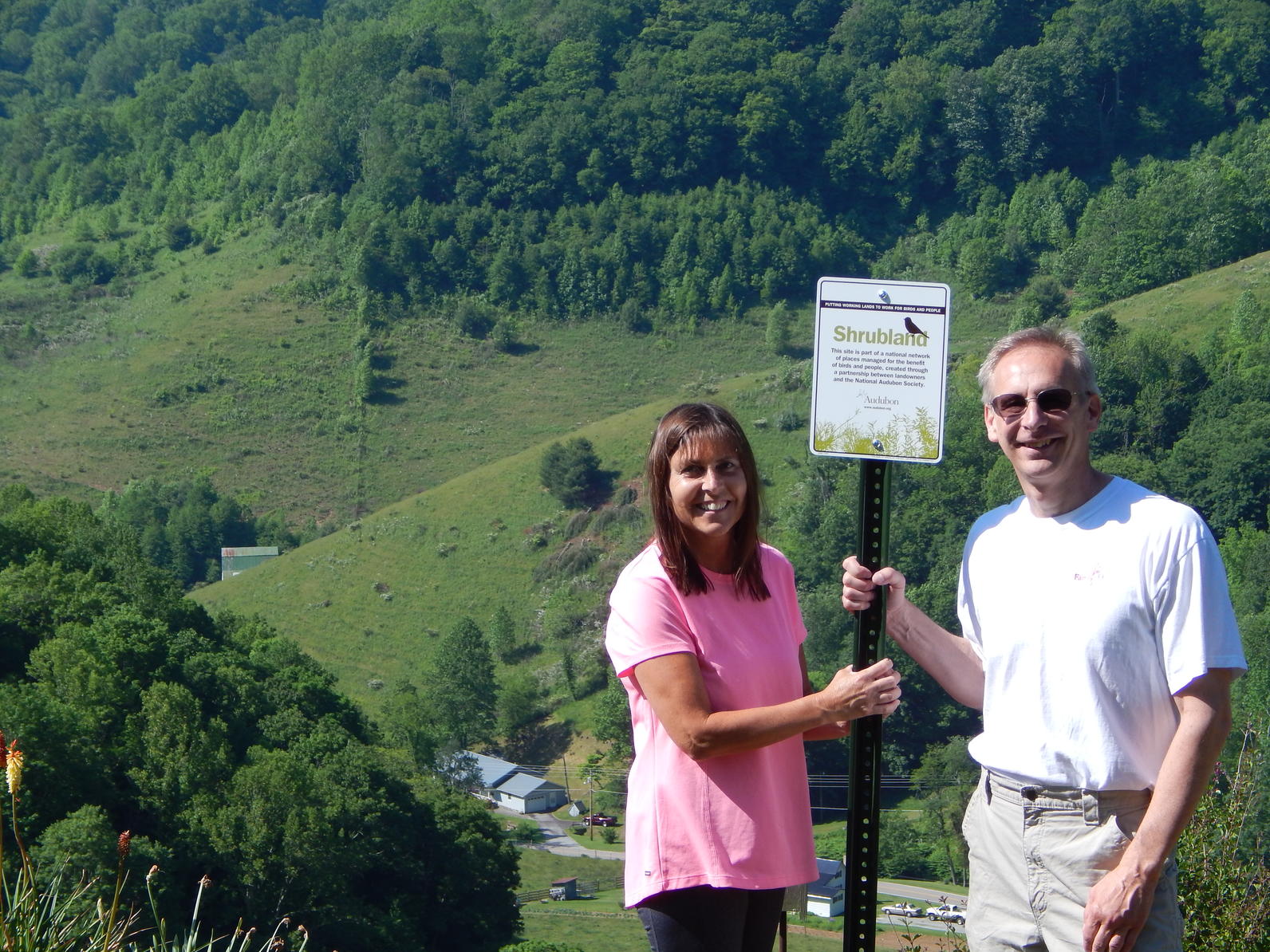
LIZ SIEBERLING & RANDY CULLOM
Liz Seiberling and Randy Cullom of Clyde, NC recently enrolled to manage their land for the benefit of these highly threatened warblers.
“It has been a real privilege to work with Aimee and Patrick on improving the habitat for Golden-winged Warblers here at Cold Springs Ranch (CSR). We were able to set aside several acres of prime habitat that had been kept mowed for many years. It is an area that is very difficult to mow because of how rocky and steep it is, so it had been neglected for a few years and had become good Golden-winged Warbler habitat on its own.
It was very gratifying to present it to the full CSR community (with the help of Audubon and NC Wildlife) as a bird habitat and have it unanimously embraced! Golden-winged Warblers have been observed nesting in the area now.”
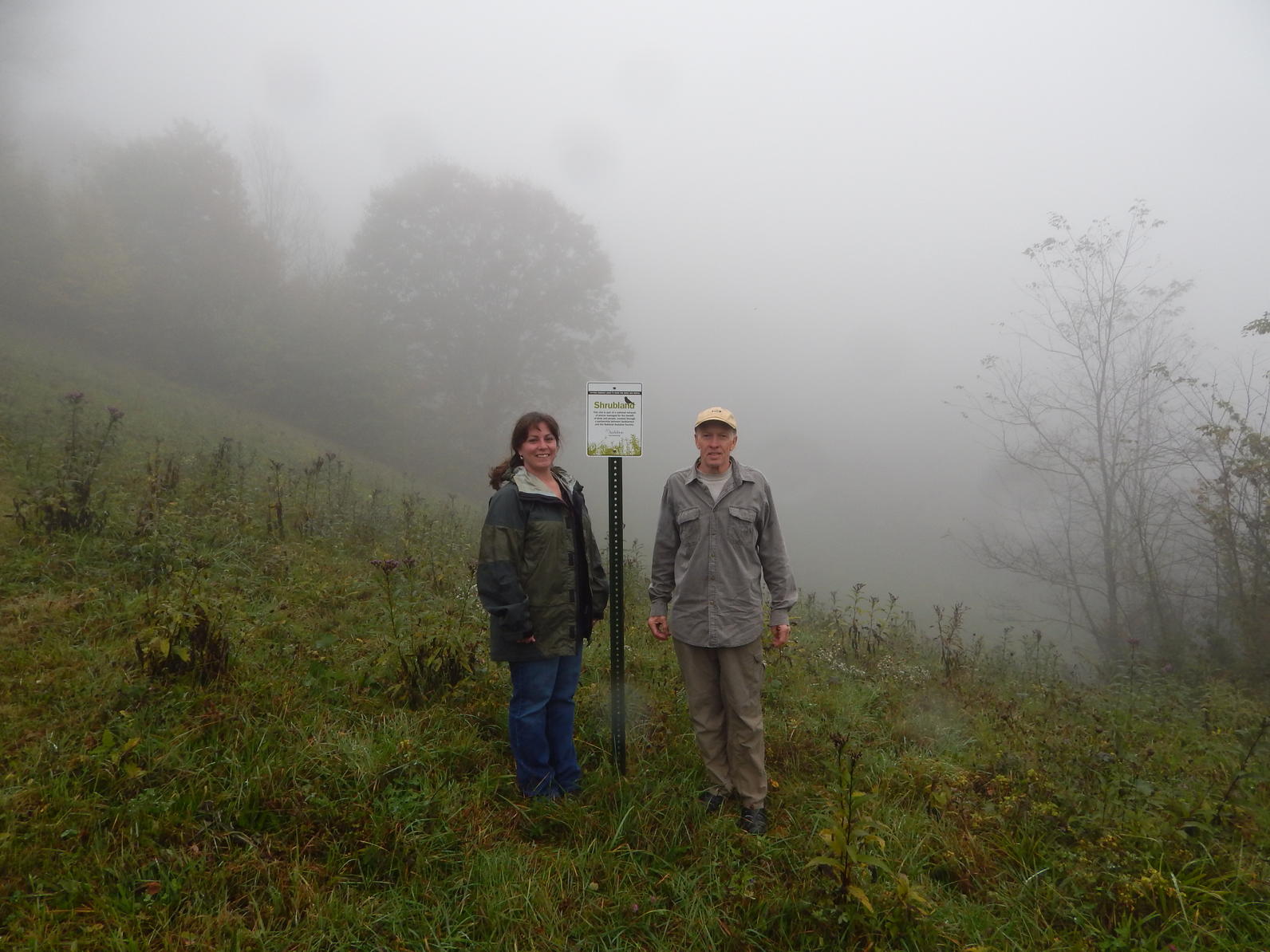
PAUL MERTEN
Paul Merten, a participant in the program, has been employing a multiple-use management strategy for wildlife – principally non-game songbirds - for years. “With the technical guidance of Audubon’s Aimee Tomcho, North Carolina Wildlife Resources CommissionBiologist Patrick Farrell, and my woodland management implementation; significant improvements have been incorporated to create optimal nesting habitat for the Golden-winged Warbler” says Paul.
“Many thanks to these folks for helping those that are voiceless, and now let’s hope we make life a little easier for some of our feathered friends!”
Golden-winged Warblers have already been spotted near Merten’s property, showing that the habitat supports the birds and is therefore a great candidate for restoration of early successional forest that will help the warbler during breeding.

If you or someone you know lives in the Western NC mountain region, your habitat may be a prime site for priority species like the Golden-winged Warbler. Review our focal area map. If your property is found in one of these areas, contact Aimee Tomcho, Conservation Biologist, to schedule a land survey to determine if you’re eligible to join.
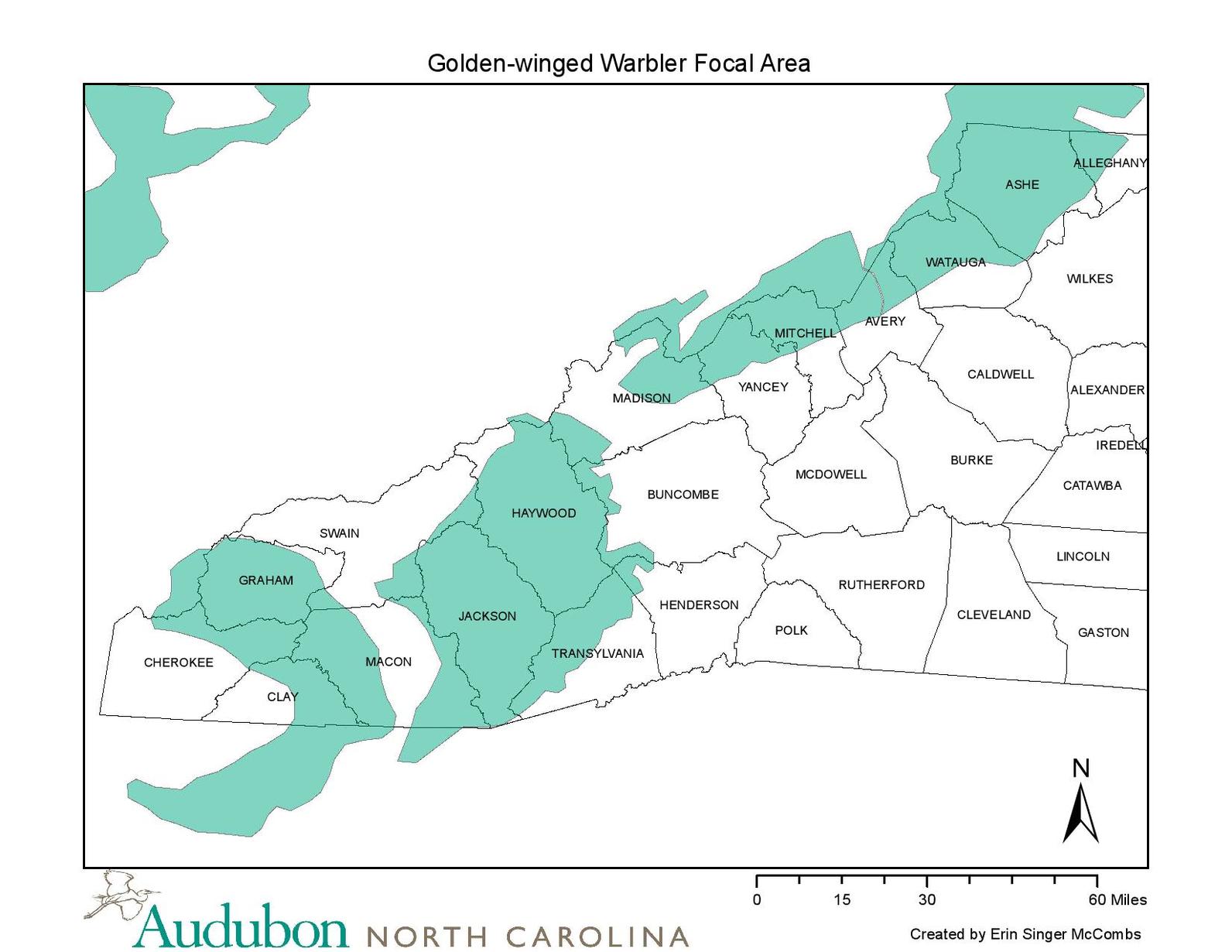
Click here to learn more about Golden-winged Warblers and our work to restore habitats where they nest through the Putting Working Lands to Work initiative.




